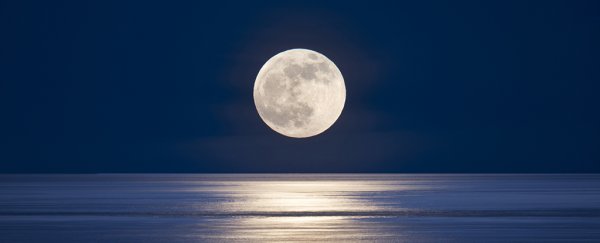July's full moon – nicknamed the Buck Moon – will charge across Earth's skies on Wednesday, July 13. The Moon will reach its peak at about 2:38 pm EDT (1838 UTC) on Wednesday, but the Buck doesn't stop here; the moon will appear bright and full on Tuesday and Thursday night (July 12 and July 14), as well.
To watch a live feed of the full moon rising over Rome, Italy, click on over to the Virtual Telescope Project on Wednesday afternoon. Streaming begins at 3:00 pm EDT (19:00 UTC).
Avid skywatchers may notice that the Moon looks even larger and brighter than normal. That's because, for the third month in a row, the full moon will rise as a supermoon – or a full moon that occurs while the Moon is around or at its closest point to Earth, also known as its perigee. This month, the Moon reaches perigee at about 5 am EDT (09:00 UTC) on July 13, just 10 hours before the full moon rises.
Supermoons can appear larger and up to 16 percent brighter in the sky than the average full moon, according to timeanddate.com. The last two supermoons were June's Strawberry Moon and May's full moon, the Flower Moon, which also featured a total lunar eclipse. Next month's Sturgeon Moon, which peaks August 11, will be the final supermoon of the year, according to the Farmer's Almanac.
What's with these fishy, flowery Moon names? Again, we turn to The Maine Farmer's Almanac, which began publishing Native American names for the full moons in the 1930s. According to the Almanac, the Algonquin tribe living in what is now the northeastern United States dubbed the July full moon the Buck Moon, as it's typical to see young bucks sprout their first nubbins of antlers around this time of year. Modern cultures have since adopted the Moon's Algonquin name.
According to NASA, the July full moon is also known as the Thunder Moon, due to the frequent thunderstorms that hit in early summer.
The full moon occurs about once a month when the Sun, Earth and Moon align on an invisible 180-degree line. The Moon's orbit is about 5 degrees different from Earth's, so it is usually a little higher or lower than Earth's shadow, enabling the sun's rays to illuminate the side facing Earth.
Related Stories:
Photos: Super Blood Wolf Moon eclipse stuns viewers
See spectacular lunar mission images in 3D (Photos)
Photos from the Moon's far side! China's Chang'e 4 lunar landing in pictures
This article was originally published by Live Science. Read the original article here.
